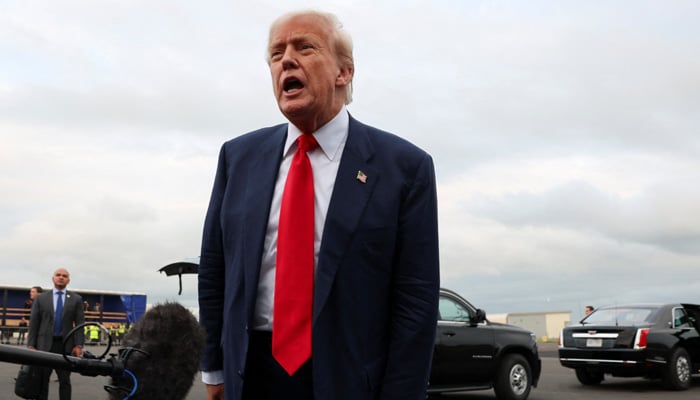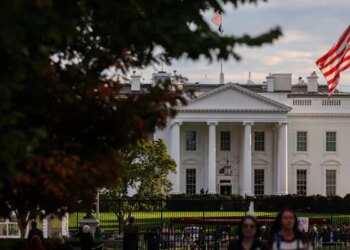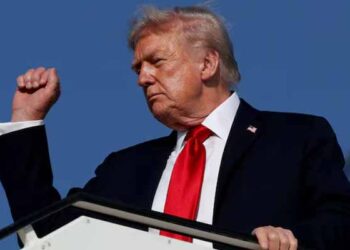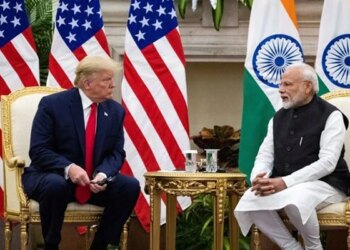Select Language:
Three days of intense fighting along their shared border have resulted in over 30 fatalities and displaced more than 130,000 residents, marking the most severe clash between Cambodia and Thailand in more than a decade. The death toll continues to rise as new conflict zones emerge, particularly in Cambodia’s Pursat Province and Thailand’s Trat Province, located over 60 miles from existing battlefronts.
In a move to de-escalate tensions, President Donald Trump announced Saturday that Cambodian and Thai leaders had agreed to meet immediately in an effort to reach a ceasefire. During his visit to Scotland, Trump shared via social media that he had spoken directly with Prime Minister Hun Manet of Cambodia and Thailand’s acting Prime Minister, Phumtham Wechayachai. He warned both nations that ongoing border disputes could jeopardize future trade agreements with the United States.
“Both sides are seeking an immediate ceasefire and peace,” Trump stated, providing a detailed account of his diplomatic interventions. Despite his efforts, fighting persisted into the third day, with both nations claiming to act in self-defense. The new flare-up in Trat and Pursat areas signifies a troubling escalation, with both governments urging the other to halt hostilities and initiate negotiations.
Since an incident in late May where a Cambodian soldier was shot, the conflict has intensified, leading to the reinforcement of troops along the border. Casualty figures stand at seven Thai soldiers and 13 civilians killed on the Thai side, with Cambodia reporting five soldiers and eight civilians killed, according to defense officials.
Trump’s direct involvement included relaying messages between the two leaders, both of whom expressed a desire to resume talks and restore peace. He also emphasized his intention to negotiate separate trade agreements with both countries once stability is restored, viewing this as a step toward broader economic cooperation.
The Thai and Cambodian embassies in Washington did not respond immediately to inquiries. Meanwhile, in Sisaket Province near the border, a university campus has been transformed into a shelter accommodating over 5,000 displaced individuals. One refugee, Samrong Khamduang, recounted fleeing her farm amid artillery fire, leaving her husband behind to protect their livestock.
Regional efforts continue, with ASEAN Chairman Anwar Ibrahim advocating for a ceasefire. Cambodia has endorsed his proposal, while Thailand has expressed tentative support. Anwar has directed his foreign minister to engage with both nations’ foreign ministries in hopes of halting the fighting.
At the United Nations, Thailand’s ambassador accused Cambodia of launching unprovoked attacks and planting land mines since mid-July, claims that Cambodia denies. Cambodia’s defense ministry responded by accusing Thailand of deliberate military aggression intended to violate its sovereignty. Both countries are embroiled in a long-standing dispute over undemarcated border points, notably involving historic temples such as Preah Vihear, which was awarded to Cambodia by the International Court of Justice in 1962. Tensions reignited in 2008 after Cambodia attempted to list the site as a UNESCO World Heritage location, leading to years of skirmishes and casualties. Cambodia has recently petitioned the ICJ to settle these territorial disputes, although Thailand insists on bilateral negotiations.






